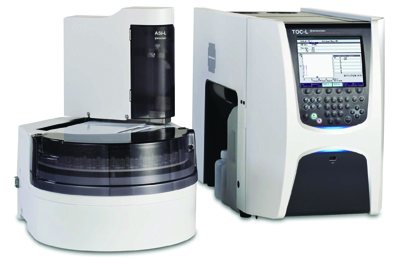TOC L Analyzers


Patented 680°C Combustion Catalytic Oxidation/NDIR Detection Method
The combustion catalytic oxidation method completely oxidizes easily decomposed, low-molecular-weight organic compounds, as well as hard-to-decompose insoluble and macromolecular organic compounds. In addition, the temperature required for catalytic combustion is significantly lower than required for combustion without a catalyst, increasing combustion tube life and minimizing the effect of high salt content in samples.
This high-temperature catalytic oxidation technique is specified in several US EPA-approved methods, including:
- EPA 415.3
- SM 5310B
- ASTM D7573
Ultra Wide Sample Measurement Range
A sample range of 4 μg/L to 30,000 mg/L (with the automatic dilution function) enables measurements of everything from ultrapure water to highly contaminated water.
Reliable, Efficient Sample Injection System
Features automatic sample acidification and sparging, as well as an automatic dilution function that reduces sample salinity, acidity and alkalinity. This significantly extends the use of catalysts and combustion tubes.
Standard and High-Sensitivity Models
The TOC-L series consists of a high-sensitivity model with a detection limit of 4 μg/L, making it suitable for a variety of applications, including pure water measurements, and a standard model designed for more routine TOC measurements. Each model is available as a standalone or PC-controlled laboratory TOC system. The standalone model offers:
- TOC-L Analyzer keyboard and usb port
- Easy-to-use dedicated keyboard and highly-visible TFT color LCD screen
- Ability to output measured data to USB memory for easy PC-based data management
- Printout by commercially-available PC printer
Functions Common With Each Model
- Automatic setting of optimal measurement conditions
- Automatic selection of the optimal calibration curve
- Automatic changing of conditions and re-measurement of out-of-range samples
